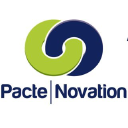
FMP

Pacte Novation
MLPAC.PA
EURONEXT
Inactive Equity
Pacte Novation operates as a software engineering company in France. The company offers BMRS/ motor of rules; recognition and processing of images; and natural language semantic analysis, as well as designs and implements predictive analytics algorithms running on a large volume of quality data. It also manages, designs, builds and maintains application software, which are custom built. In addition, the company provides railways information systems, such as ERTMS systems; CBTC systems for automatic metros; control systems ground / edge; interlocking systems, which include PAI, PIPC, and PMI; supervision comprising PCC and simulators; operational assistance consisting of optimization of track inspection tours, system traveler information, time tables, and pricing; and the management of technical data. Additionally, the company offers UX design; analysis of the data by an algorithmic and statistical approach and development of cognitive models and declarative systems; and connected objects. Pacte Novation was founded in 1994 and is based in Issy-les-Moulineaux, France.
9.8 EUR
1.65 (16.84%)

EBIT (Operating profit)(Operating income)(Operating earning) = GROSS MARGIN (REVENUE - COGS) - OPERATING EXPENSES (R&D, RENT) EBIT = (1*) (2*) -> operating process (leverage -> interest -> EBT -> tax -> net Income) EBITDA = GROSS MARGIN (REVENUE - COGS) - OPERATING EXPENSES (R&D, RENT) + Depreciation + amortization EBITA = (1*) (2*) (3*) (4*) company's CURRENT operating profitability (i.e., how much profit it makes with its present assets and its operations on the products it produces and sells, as well as providing a proxy for cash flow) -> performance of a company (1*) discounting the effects of interest payments from different forms of financing (by ignoring interest payments), (2*) political jurisdictions (by ignoring tax), collections of assets (by ignoring depreciation of assets), and different takeover histories (by ignoring amortization often stemming from goodwill) (3*) collections of assets (by ignoring depreciation of assets) (4*) different takeover histories (by ignoring amortization often stemming from goodwill)